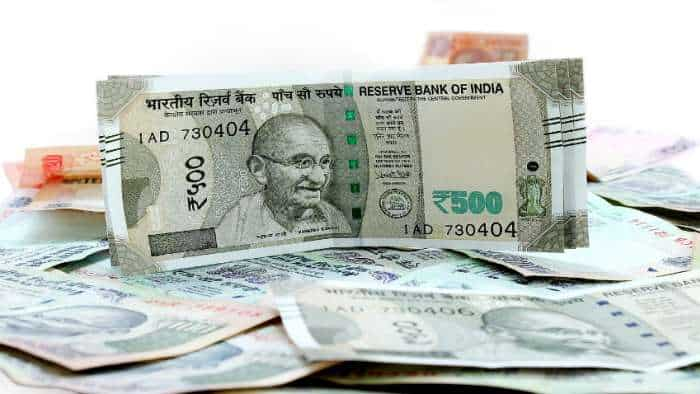Rs 40,000 smartphone vs Rs 10,000 smartphone: What’s the difference and everything you might miss out on
Rs 40,000 smartphone vs Rs 10,000 smartphone: After over a month’s silence, the Indian smartphone industry has come to life again with Xiaomi launching its flagship level smartphone Mi 10 in India on Friday afternoon and several other launches planned over the coming week.

Rs 40,000 smartphone vs Rs 10,000 smartphone: After over a month’s silence, the Indian smartphone industry has come to life again with Xiaomi launching its flagship level smartphone Mi 10 in India on Friday afternoon and several other launches planned over the coming week. Few others which were launched before or during lockdown, have now gone on sale with government relaxing the guidelines.
The market today is full of exciting smartphones with prices starting from as low as Rs 5000 and going well over Rs 1 lakh. But, The customers need to decide how much they are actually willing to spend on a smartphone. Of course, you will miss out on a few things, but are they actually that important? We try to pen down the major differences between a Rs 40,000 smartphone and a Rs 10,000 smartphone.
Rs 40,000 smartphone vs Rs 10,000 smartphone: Display
The biggest difference between a premium and budget smartphone can be seen in terms of the display used. This involves several factors. To begin with, a budget smartphone would always come with bezels and a thick chin. However, the premium smartphones these days are giving you an edge-to-edge display, with almost no bezels. Yes, very sharp, very 'chic' looks.
The difference in quality can be broken into two parts – resolution and refresh rate. Most budget smartphones will offer you LCD displays with 720p video quality. But, in premium segment makers like OnePlus and Samsung are offering UHD displays.
WATCH | Tech Talks episode 12
The screen refresh rate is the number of times your phone refreshes per second. While most premium smartphones continue to run on 90Hz displays, it is slowly making its way to the budget segment too.
Rs 40,000 smartphone vs Rs 10,000 smartphone: Performance
As you move up the ladder, performance also improves with top-end chipsets inside the device. The latest to make its way to India is Qualcomm Snapdragon 865 SoC which has been used in sub-Rs 45,000 segment phones like iQOO 3 and Realme X50 Pro, making them 5G ready.
Yet, the budget segment today also features capable chipsets that are enough to pull off daily tasks. However, they surrender during heavy gaming.
Rs 40,000 smartphone vs Rs 10,000 smartphone: Camera
Smartphone offers often associate camera performance to number of pixels on offer or lenses used. Going by that logic, almost every phone in the budget segment today has at least three to four lenses offering 48MP or 64MP primary camera. Yet, there is a clear difference in the image quality.
This is where image processing and software comes into place. A better processor enhances your camera performance, taking your images to next level. Yes, they are very pleasing to the eye.
Rs 40,000 smartphone vs Rs 10,000 smartphone: Battery
This is where the smartphone makers have come a long way. Most budget smartphones these days have bigger batteries than those on premium devices! Samsung M30s and M31, for example, come equipped with a massive 6000 mAh battery.
The difference, however, remains in the charging technologies. Most premium smartphones have support for faster charging allowing you to juice up the device within minutes – something that is missing in the budget segment.
Get Latest Business News, Stock Market Updates and Videos; Check your tax outgo through Income Tax Calculator and save money through our Personal Finance coverage. Check Business Breaking News Live on Zee Business Twitter and Facebook. Subscribe on YouTube.
RECOMMENDED STORIES

Top 7 Mutual Funds With Highest Returns in 3 Years: Rs 100,000 one-time investment in No. 1 scheme has swelled to Rs 2,13,588

8th Pay Commission: Can basic salary limit cross Rs 6.40 lakh mark in new pay commission? Know why it may be possible

Top 7 Flexi Cap Mutual Funds With Highest Returns in 1 Year: Rs 1,50,000 one-time investment in No. 1 fund is now worth Rs 1,78,740; know how others have fared

Revised New Tax Regime Slabs: Is your annual income Rs 12,90,000? Will you be taxed on Rs 15,000, or Rs 12,9000? Know here
04:37 PM IST









 Project Starlight: OnePlus announces Rs 6,000 crores investment in India
Project Starlight: OnePlus announces Rs 6,000 crores investment in India  Up to Rs 20k discount on OnePlus smartphones: Check offers and other details of Community Sale
Up to Rs 20k discount on OnePlus smartphones: Check offers and other details of Community Sale OnePlus 13 launch timeline confirmed: Here's first look of smartphone - Check details
OnePlus 13 launch timeline confirmed: Here's first look of smartphone - Check details OnePlus 13, 13R launch expected soon: Here's everything you need to know
OnePlus 13, 13R launch expected soon: Here's everything you need to know  Sharing files from OnePlus to iPhone is much easier now: Find OnePlus’ feat inside
Sharing files from OnePlus to iPhone is much easier now: Find OnePlus’ feat inside